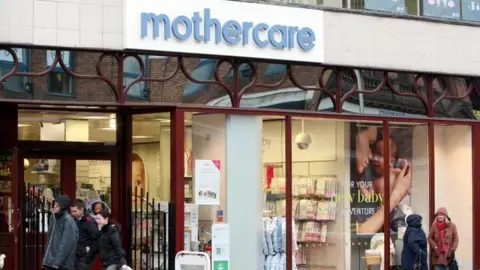Mothercare stores to close as rescue plan backed
 PA
PACreditors of struggling mother and baby products retailer Mothercare have backed a restructuring plan that will lead to the closure of 50 stores.
The closures - putting 800 jobs at risk - are part of a company voluntary arrangement (CVA), which allows companies to shut loss-making shops and reduce rents.
Under the CVA, Mothercare will also raise £28m through issuing new shares.
The firm said it continued to trade and would not be going into administration.
Last month, Mothercare said it was in a "perilous" financial position and confirmed that its rescue plan would involve closing 50 stores.
The store closures will leave it with 78 outlets in the UK by 2020. It is not yet clear which stores will be closing.
Clive Whiley, Mothercare's interim executive chairman, said: "We are very grateful for the support of our many stakeholders across our creditor base in supporting today's CVA proposals.
"These measures provide a solid platform from which to reposition the group and begin to focus on growth, both in the UK and internationally."
The retailer has already nearly halved its store numbers over the past five years. It had intended to have 92 outlets by 2023, but has now accelerated its closure plans and will have just 73 by that year.
The company plunged to a £72.8m loss in its most recent financial year, as it took hefty charges to pay for closing stores and reorganising the business.
Mothercare saw falling numbers of shoppers in the second half of the financial year and had to discount to try to stimulate sales. However, over the year as a whole, like-for-like sales fell 1.3%.
CVAs have become widespread this year as a sheaf of major High Street names have had to undergo deep changes in the way they operate.
Earlier this year, toy store chain Toys R Us collapsed into administration, as did electronics retailer Maplin.
Carpetright has entered into a CVA and announced store closures, as has fashion chain New Look.
A number of reasons have been cited for failures on the High Street, including a squeeze on consumers' income, the growth of online shopping and the rising costs of staff, rents and business rates.
